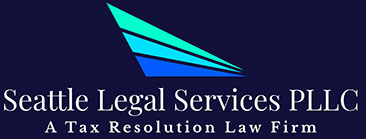IRS LT38: Reminder, Notice Resumption

During COVID-19, the IRS paused several collection actions, but as of January 2024, the IRS has resumed collection actions. Recently, the agency announced that automatic penalty relief applies to qualifying taxpayers who did not receive notices during this period and with an assessed tax of less than $100,000.
To let taxpayers know about the resumption of collection notices and the penalty relief, the IRS is sending out Letter LT38. Here’s everything you need to know about IRS LT38, including how to respond, and the consequences of not responding.
What is IRS LT38?
During COVID-19, the IRS paused many collection actions, including sending notices to taxpayers with balances due or to taxpayers who failed to file a tax return. Now, as of January 2024, the IRS is resuming collection actions – and sending out LT38 as a reminder to taxpayers who have outstanding tax liabilities.
Notices that will resume in 2024 include:
- CP59: Unfiled tax return notice
- CP518: Final notice about your unfiled tax return
- CP501 and CP503: Initial and follow-up notices for unpaid balances due
- CP504: Intent to levy
What is Included on IRS LT38?
Here is a full breakdown of Letter LT38 and what each section means.
Part 1: Reminder
On the first page of your LT38, the IRS informs you that collection actions were suspended during COVID-19 and are now “resuming normal operations”. In the box below this section, you will see your total amount due, including interest and penalties, and the date these interest and penalties were calculated to.
Part 2: How to Pay
The next section explains how you can pay your balance due; either online by scanning the QR code provided or by mail using the attached payment form at the bottom of your LT38 notice. If paying online, you can:
- Pay directly from your bank account
- Pay using your credit/debit card or digital wallet
- Apply for a payment plan (more information below)
Part 3: Your Online Account Information
The next section provides an overview of your online account, including a QR code to access or create your account. With an online account, you can easily access your tax records, view your tax year breakdown, and see your full payment history – including pending and scheduled payments.
Part 4: If You Can’t Pay in Full
If you are unable to pay the amount owed in full, the letter also provides information on tax relief options, including:
- Installment Agreement: This is a payment plan that allows you to pay your tax debt in smaller, more manageable monthly installments rather than in one lump sum.
- Offer in Compromise: If eligible (for example you’re facing financial hardship where paying the full amount would cause undue financial hardship), this allows you to settle your tax debt for less than the full amount owed.
- Currently Not Collectable (CNC): If you are facing financial hardship, the IRS may grant you CNC, meaning that the IRS will temporarily suspend collection efforts.
More information on payment options and how to apply is below.
Part 5: Your Billing Summary
This section provides a detailed summary of your outstanding tax. This includes a breakdown of your balance, interest, and penalties for each tax year, followed by the total amount owed.
If you filed a joint return, you will both receive a copy of LT38 containing the same information.
Part 6: More Information
If you need more information regarding your LT38 notice, the IRS has provided a list of online resources that answer your questions. If you have any questions or concerns, or can’t find the information you need online, you can call 800-829-3903.
Part 7: Your Rights
When dealing with the IRS, taxpayers have fundamental rights. These include:
- The right to be informed: You have the right to be informed about your tax obligations and the IRS processes. This includes clear explanations of tax laws and procedures, as well as information about the decisions made regarding your tax accounts.
- The right to quality service: You have the right to receive prompt, courteous, and professional assistance from the IRS. You should expect accurate and helpful responses to your inquiries and timely resolution of your issues.
- The right to pay no more than the correct amount of tax: You have the right to pay only the amount of tax legally due, including the right to challenge the IRS’s position and be heard during an examination or appeal.
- The right to challenge the IRS: You have the right to challenge the IRS’s actions or decisions. This includes the right to appeal and present your case before an independent forum.
- The right to finality: You have the right to know the maximum amount of time the IRS has to audit a particular tax year or collect a tax debt (statute of limitations). Once that time has passed, the IRS generally cannot take further action.
- The right to privacy: You have the right to expect that your tax information will be kept confidential. Unauthorized disclosure of this information is prohibited by law.
- The right to confidentiality: Similar to privacy, confidentiality ensures that your information is protected. This right extends to communications with tax professionals and other third parties.
- The right to retain representation: You have the right to retain an authorized representative (such as a tax attorney, certified public accountant, or enrolled agent) to represent you in dealings with the IRS. This includes the right to have someone else speak on your behalf.
- The right to a fair and just tax system: You have the right to expect fairness in the tax system and to be treated justly. This includes the right to appeal IRS decisions and the right to be heard in a fair and impartial manner.
Penalties and Interest
The IRS imposes compounded daily interest on your outstanding amount. The current interest rate is 8%, which is reassessed and adjusted quarterly in line with the federal short-term rate. On top of interest, the IRS also imposes penalties for failing to file and/or pay your taxes by the due date for the tax year.
The failure-to-file penalty is 5% of the unpaid taxes for each month that the return is late, with a maximum penalty of 25% of the total unpaid tax amount.
The failure-to-pay penalty is 0.5% of the unpaid taxes for each month (or part of a month) that the taxes remain unpaid. The maximum penalty is usually capped at 25% of the total unpaid tax amount. However, for the tax years 2020 and 2021, due to COVID-19, the IRS automatically waived certain failure to pay penalties – more information below.
Automatic Penalty Relief: What it Means and Do You Qualify?
For taxes less than $100,000 for the 2020/21 tax years, the IRS automatically waived certain failure to pay penalties for individuals and businesses.
You’re eligible for this relief if you:
- Filed a Form 1040 or 1041 tax return for 2020 and/or 2021.
- Had assessed taxes less than $100,000.
- Received an initial balance due notice (CP14) between February 5, 2022, and December 7, 2023.
If your assessed taxes were less than $100,000, the total shown on your LL38 includes the automatic penalty relief. If you are entitled to a refund because of automatic penalty relief, you should have received an IRS notification (CP21 or CP210) explaining the adjustment.
If your assessed taxes were more than $100,000, you may still be eligible for penalty relief for failure to file penalties if you have a valid reason for failing to file on time, such as natural disasters, civil disturbances, death or serious illness, or system issues with electronic filing.
What You Need to Do if You Receive IRS LT38
If you’ve received IRS LT38, make sure to read the letter carefully and ensure that the IRS’s calculations align with your records. If you do find any mistakes, contact the IRS directly to resolve the issue; contact information can be found on your LT38.
If your LT38 states that you have missing tax returns, be sure to file the returns as soon as possible. Your notice should identify which returns are missing.
Your LT38 explains how to pay your outstanding balance, either online by scanning the QR code or via mail using the payment coupon attached to your notice. Once you have paid your full balance, interest and penalties will stop accruing. If you are unable to pay in full, your LT38 also provides information on different payment options, including CNC and installment agreements.
What if I Can’t Pay the Full Amount?
As noted in your LT38, there are several options available if you’re unable to pay the amount due in full. Here are some options, eligibility criteria, and how to apply.
Installment Agreement
There are several types of installment agreements based on the amount owed and your financial situation. The most common ones are Guaranteed (owe $10,000 or less and have filed all required tax returns), Streamlined (outstanding balance up to $50,000), and Partial Payment (if you cannot afford to pay the full amount within the collection period).
To apply for an installment agreement, you can use the IRS Online Payment Agreement service or file Form 9465.
Offer in Compromise (OIC)
This allows you to settle your tax debt for less than the full amount owed. To be eligible for an OIC, taxpayers must demonstrate significant financial hardship or doubt regarding the collectability of the full tax debt. The IRS considers factors such as income, expenses, assets, and future earning potential when evaluating OIC applications.
To apply for an OIC, you will need to complete and submit Form 656, along with a detailed financial statement (Form 433-A for individuals or 433-B for businesses).
Currently Not Collectible (CNC) Status
Currently Not Collectible (CNC) status is a temporary status that allows taxpayers facing financial hardship to temporarily halt collection efforts by the IRS. To be eligible for CNC status, taxpayers must demonstrate that paying their tax debt would create an economic hardship, leaving them unable to meet their basic living expenses. This status is typically granted to individuals with limited income and assets.
To apply for CNC status, you must provide detailed financial information, including income, expenses, and assets, using Form 433-F for individuals or Form 433-B for businesses.
What Happens if You Don’t Respond to IRS LT38?
As with any IRS notice, it’s best to respond to IRS LT38 promptly to reduce the risk of accruing further penalties and interest. If you fail to respond to LT38, the IRS will commence with issuing notices to enforce collections. The legal notices are delivered through a series of collection letters, including CP504 (Intent to Levy) and LT11 (Final Notice Before Levy). Once the IRS has sent the IRS CP504 and the LT11 or Letter 1058, it can begin collecting delinquent taxes from you.
When to Work with a Tax Professional
If you have received IRS LT38, it means that you have outstanding tax liabilities. If you receive Letter LT38 and still owe taxes, it is vital that you resolve your IRS debt as soon as possible. Working with a tax professional can ensure that you respond to your LT38 notice correctly to reduce the risk of increased penalties and interest on your account.
If you have questions regarding your LT38, are unsure of how to respond, or disagree with the notice, contact Seattle Legal Services, PLLC at 206-536-3152 today.
